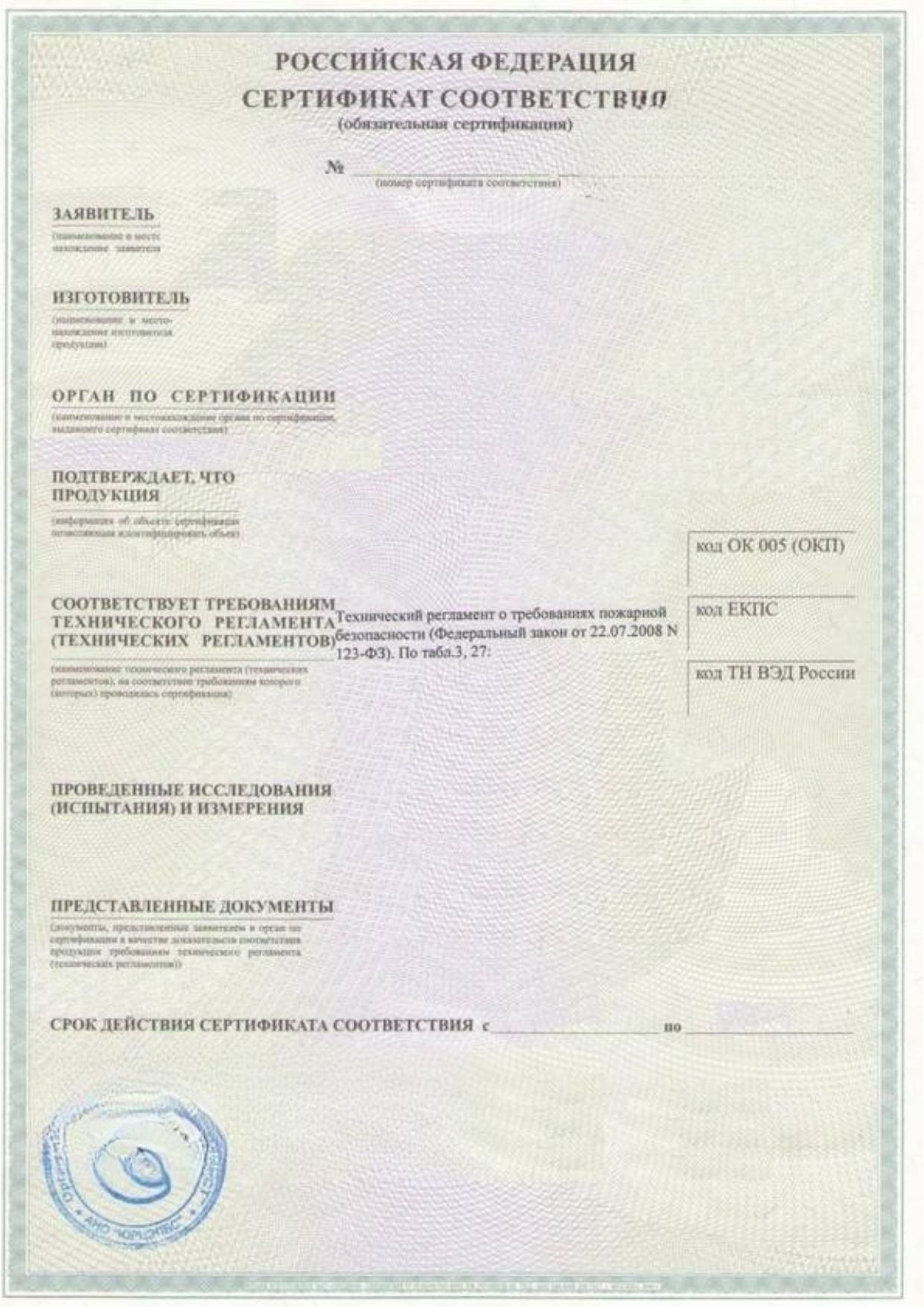The GOST R Fire Certificate is by far the most requested GOST R certificate. It comes with its own specific parameters, testing methods, and certification schemes.
What is the GOST R Fire Certificate?
The GOST R Fire Certificate (in Russian Пожарный Сертификат) certifies that a product complies with Russian fire safety legislation. It is based on Federal Law No. 123 of 22 July 2008 (123-ФЗ), which sets the technical framework for fire safety requirements.
Unlike other certificates, this one is strongly linked to laboratory testing. Tests assess how materials and products behave in terms of fire propagation, containment, smoke generation, and toxicity.
Federal Law 123-ФЗ, Article 146, and subsequent clarifications from May 2009 identified four main product categories that require this certification:
- Fire extinguishing equipment
- Electrotechnical and electrical devices
- Construction and finishing materials
- Ventilation and smoke extraction systems, fire safety valves, electrical panels
Nowadays, many of these items fall under the EAC regulation on fire safety equipment TR EAEU 043/2017, with the scope of GOST certification now mostly limited to construction products.
Both mandatory and voluntary fire safety certificates exist. Although their legal implications differ, the procedures and testing requirements are identical.
What tests are carried out?
Testing methods are not defined directly in the law but in related GOST standards. Laboratories accredited by the Ministry use the following benchmarks:
- Г (combustibility): GOST R 30244-94
- B (flammability): GOST R 30402-96
- Д (smoke generation capacity): GOST R 12.1.044-89
- T (toxicity): GOST R 12.1.044-89
The laboratory evaluates a product against these four parameters before issuing the certificate.
Is there an equivalence between the GOST R Fire Certificate and EN 13501?
There is no full equivalence between the Russian and European systems, but some correspondences can be established.
The EN 13501-1 classification for reaction to fire is based on three parameters:
- Euroclass (A1, A2, B, C, D, E, F): determined by combustibility and flammability.
- Smoke production (s1, s2, s3).
- Flaming droplets (d0, d1, d2).
The GOST R Fire Certificate, by contrast, evaluates four parameters:
- G (combustibility) – roughly corresponds to part of the Euroclass scale.
- B (flammability) – also corresponds to part of the Euroclass scale.
- D (smoke generation capacity) – comparable to the EN “s” index.
- T (toxicity of gases) – mandatory in Russia, but with no equivalent in EN 13501.
Key points to remember:
- Euroclass A2 ≈ G1 + B1 (low combustibility and hardly flammable)
- s1 ≈ D1 (low smoke generation)
- The “d” criterion (flaming droplets) in EN 13501 has no equivalent in Russia
- The “T” criterion (toxicity) in Russia has no equivalent in EN 13501
In practice, a Russian GOST R Fire Certificate is not an adaptation of EN 13501 but a parallel system.
What documents are required?
To apply for a GOST R Fire Certificate, the following documents are always requested:
- Product specifications.
- Scope of application.
- Application form.
- Technical documentation (drawings, descriptions, technical manual).
- Technical passport.
After a preliminary review, the accredited certification body may request further documents or move directly to laboratory testing. Once testing is complete, the certificate can be issued.
For serial production, however, the process does not end there: an initial audit of the production site is mandatory, and additional annual audits may also be required depending on certificate validity period.
Free Certificates Review
- Validation of your current certificates
- Regulatory update check
- Guidance on renewal
